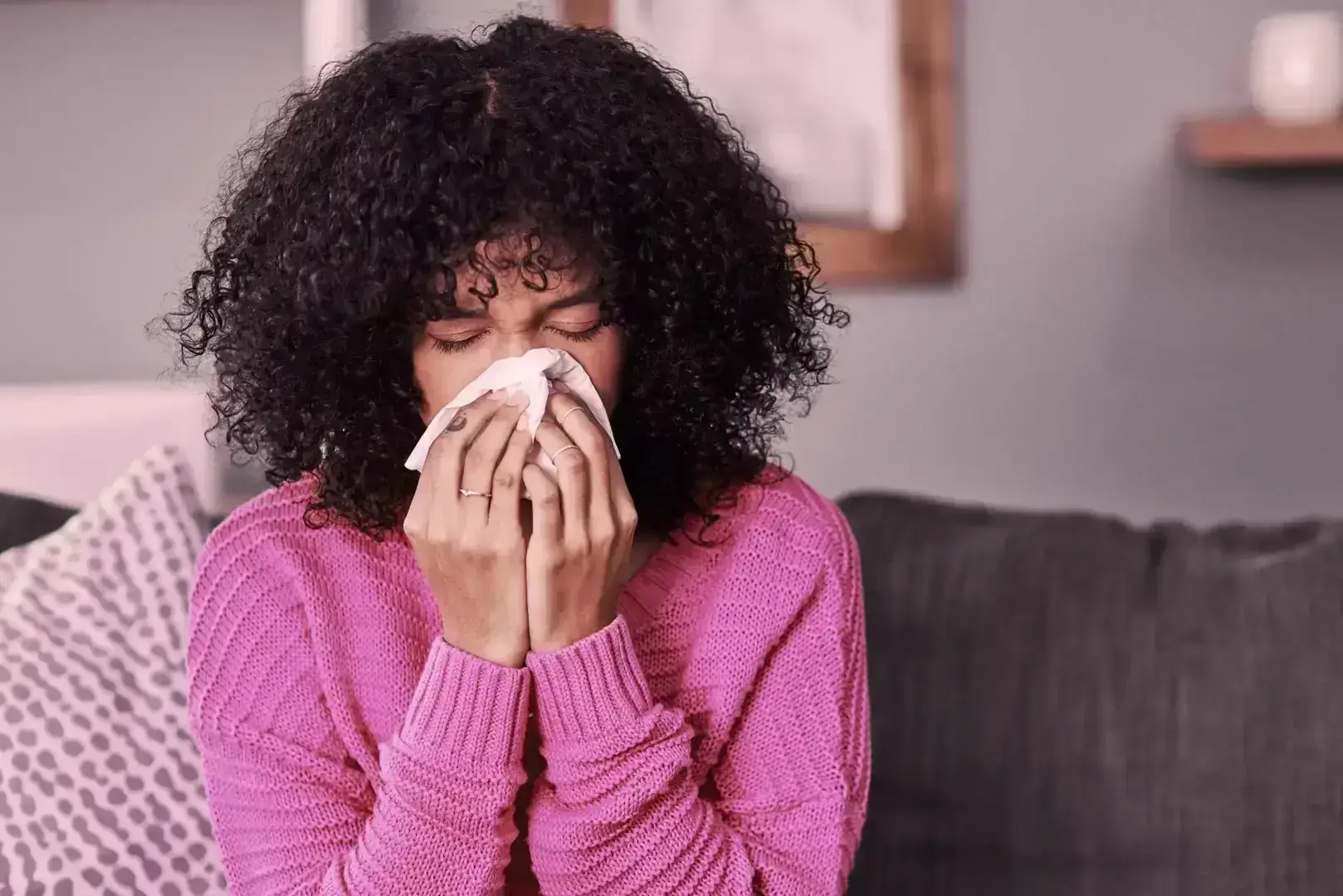What Are Dust Mites and What Causes Them?
Dust mites are very tiny bugs that measure only about one-quarter to one-third of a millimeter. They have eight legs, so technically they are not insects, but arthropods, like tiny spiders. They are too small to see with your eyes alone. Under a microscope, they look like tiny white bugs.1
Unfortunately, if you are comfortable indoors, dust mites probably are too. They prefer high humidity around 70 to 80 percent, and room temperature of 68 to 77 degrees Fahrenheit (20 to 25 degrees Celsius).1
These creepy critters don’t bite your skin—instead, they love to feed on your dead skin cells that you naturally shed all the time. Gross as it may be to imagine, people who are allergic to dust or dust mites are actually reacting to proteins found in the feces, urine, or decaying bodies of these tiny bugs.2
Other Potential Causes of Dust Allergies
Dust in your home can carry a lot of tiny allergens, not just dust mite proteins. Other particles in dust that might trigger your allergies include:
Pollen
Particles from cockroaches
Keeping your home clean and clutter-free can go a long way in reducing allergen-carrying dust.
Dust Mite Allergy Symptoms
How do you know if you have a dust mite allergy? Here are some common mild allergy symptoms that are often caused by dust-related allergies:
Nasal congestion
Runny nose
Coughing
Sneezing
Itchy, watery eyes
Itchy or sore throat
Itchy nose
Itchy skin
Postnasal drip (mucus flowing behind your nose into your throat)
Some people have an itchy red skin condition called eczema that can flare up when you are exposed to dust mites.
If you have asthma, reactions to dust and dust mites can aggravate and inflame your airways, leading to asthma symptoms including:
Difficulty breathing
Chest tightness or pain
Wheezing
Coughing
Seek medical care if you have severe symptoms, such as wheezing, shortness of breath getting worse, or you are short of breath with minimal activity.
Dust Mite Allergy Treatments and Relief
If you have dust mite allergy symptoms, there are a number of treatment options for relief.
Decongestants are medications that help to clear the nasal passages and sinuses. They work by shrinking the blood vessels in the nose, which reduces swelling and congestion.
Corticosteroids, or steroids, are a type of medication that is used to help reduce inflammation. They can be prescribed orally, inhaled, or applied topically to the skin.
Nasal irrigation is the process of flushing out your nasal passages with a saline (salt water) solution. It can help clear mucus and reduce allergens.
Immunotherapy is a treatment by your doctor that works by exposing you to small amounts of allergen, which helps the body to build up immunity and reduce allergy symptoms over time. Immunotherapy is available as an injection or as drops under the tongue.
Antihistamines like BENADRYL® are a type of medication that helps to relieve the symptoms of allergies. They work by blocking the action of histamine, which is a chemical that is released in response to an allergic reaction. This can help to reduce symptoms such as sneezing, runny nose, itchy, watery eyes, and itchy throat. BENADRYL® Allergy ULTRATABS® Tablets and BENADRYL® Allergy Dye-Free LIQUI-GELS® have 25 mg of the antihistamine diphenhydramine. BENADRYL® Allergy Plus Congestion for Sinus Pressure & Nasal Congestion Relief has 25 mg diphenhydramine and 10 mg of phenylephrine, a nasal decongestant.
Preventing Dust Mite Allergies
Indoor allergens like dust mites can be a challenge to avoid. The first thing to do when preventing dust mite allergies is to get rid of the source by making your home less friendly to them. While there is no way to completely eliminate dust mites from your home, there are actions you can take to reduce their numbers:
Dust mites dislike extreme temperatures, which is why they thrive indoors. They also dislike low humidity. Use a dehumidifier or air conditioner in your home to lower the humidity to below 50 percent.
Remove excess bedding such as pillows, blankets, and stuffed animals from your bed that can be a haven for dust mites.
Replacing old bedding, pillows, and mattresses can go a long way to reducing exposure to dust mites, especially when you sleep.
Wash your bedding using hot water once a week, and dry thoroughly on a high heat dryer setting.
Use mattress and pillow covers that are designed to create a barrier that protects you from allergens.
Reduce dust-collecting clutter. Regularly clean and dust your home, especially in your bedroom.
Vacuum carpets, rugs, and floors with a vacuum that has a HEPA filter.
If you can, remove carpet and rugs that dust mites love, and stick to hard floors in your home, especially in your bedroom.
See our guide to learn more about treating and preventing allergies.
References
Asthma and Allergy Foundation of America. Dust Mite Allergy. October 2015. Accessed from: https://www.aafa.org/dust-mite-allergy/
American Lung Association. Dust and Dust Mites. February 8, 2022. Accessed from: https://www.lung.org/clean-air/at-home/indoor-air-pollutants/dust-mites


